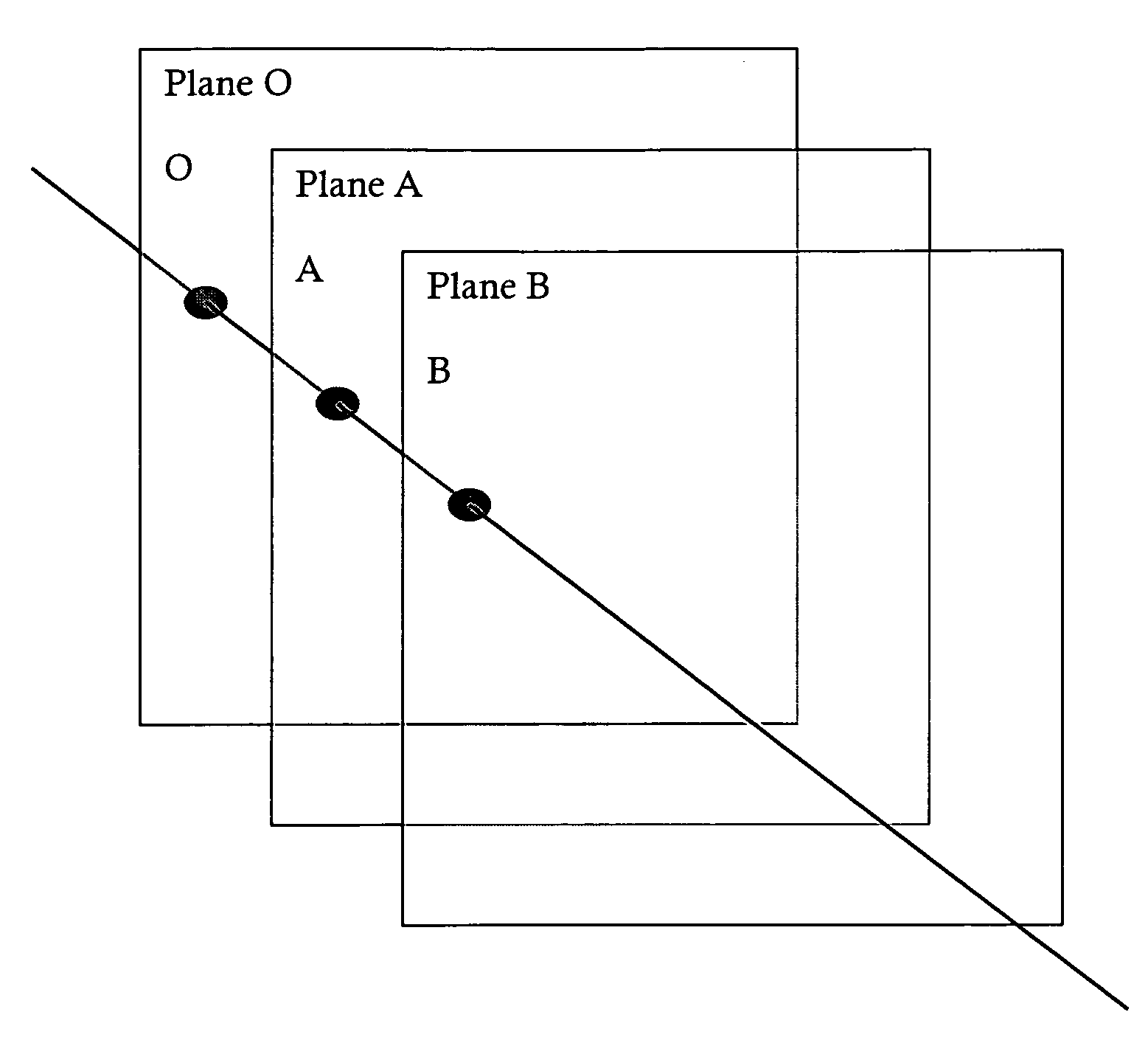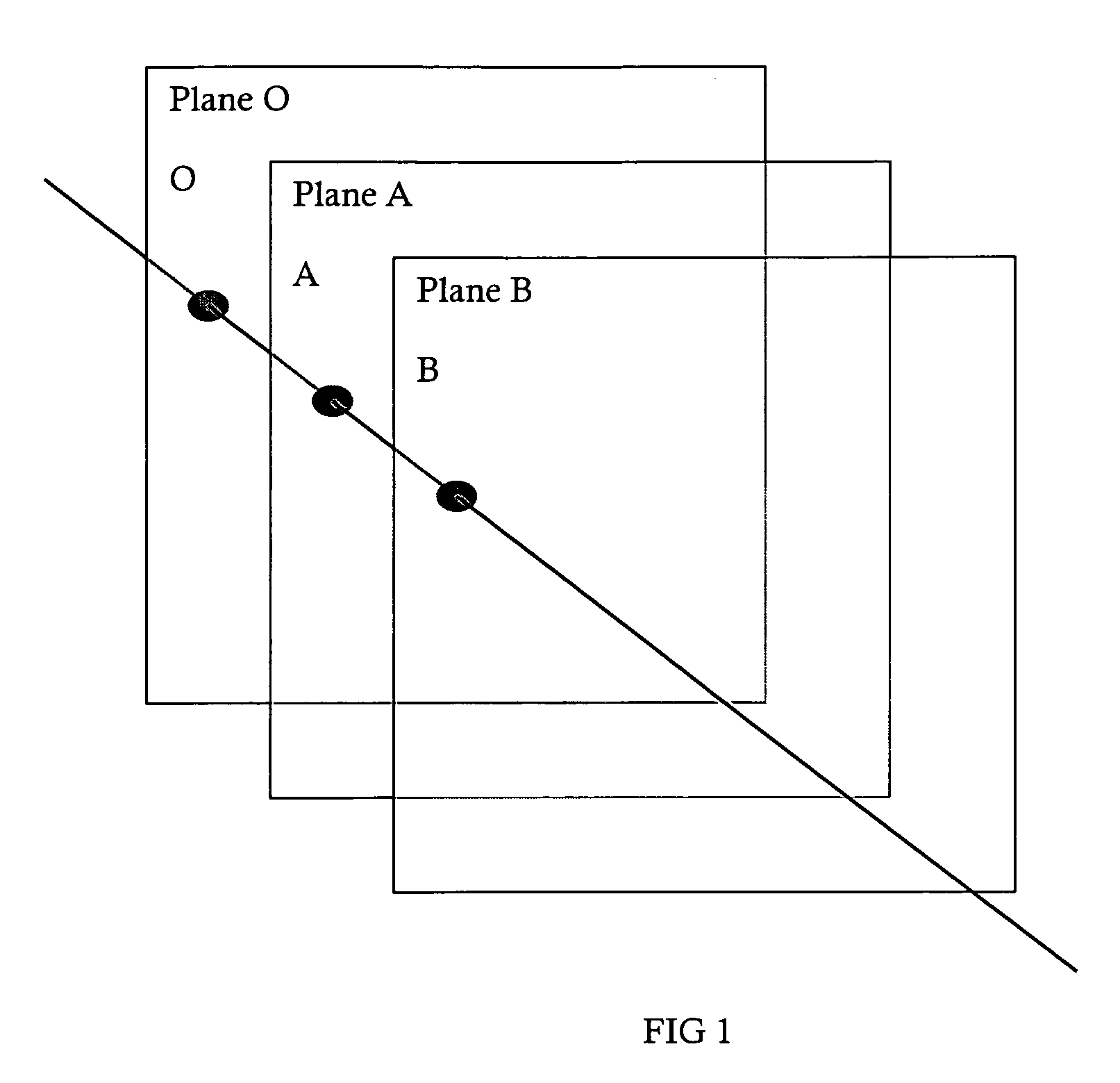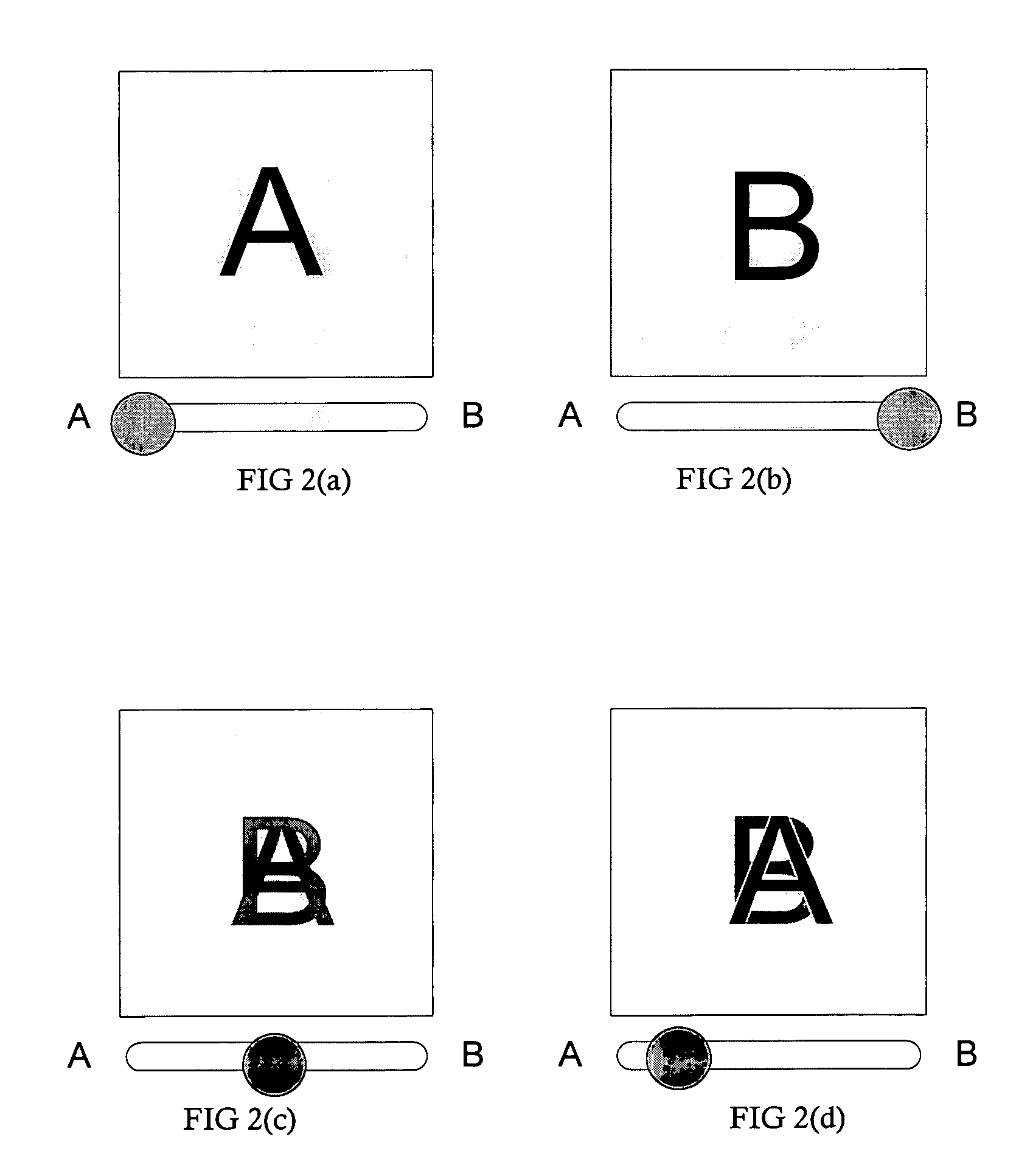Method of image manipulation to fade between two images
a technology of image manipulation and image, applied in the field of medical imaging, can solve the problems of undesirable glint, unpredictably better, etc., and achieve the effect of easy fading and better results
- Summary
- Abstract
- Description
- Claims
- Application Information
AI Technical Summary
Benefits of technology
Problems solved by technology
Method used
Image
Examples
Embodiment Construction
1. System Framework
[0021]The presently preferred embodiment of the invention discloses a process for fading between (adjusting the comparative opacity or transparency) two digital images of tissue or an organ (such as the cervix) obtained during an examination with a digital imager (such as a colposcope) in order to provide the user with a means to choose to combine an actual image (image with glint) with a glint-free image, to a user-controllable extent, to aid in the diagnosis of cancer.
[0022]First, an image with glint (such as an unpolarized, parallel-polarized, or singly-polarized image) and a glint-free image (such as a cross-polarized image) are obtained (collected) using a digital imager. Cross-polarized (XP) is when a first polarization orientation is perpendicular to a second polarization orientation. Parallel-polarized (PP) is where a first polarization orientation is parallel to the second polarization orientation. PP can also mean singly-polarized where there is only one...
PUM
 Login to View More
Login to View More Abstract
Description
Claims
Application Information
 Login to View More
Login to View More - R&D
- Intellectual Property
- Life Sciences
- Materials
- Tech Scout
- Unparalleled Data Quality
- Higher Quality Content
- 60% Fewer Hallucinations
Browse by: Latest US Patents, China's latest patents, Technical Efficacy Thesaurus, Application Domain, Technology Topic, Popular Technical Reports.
© 2025 PatSnap. All rights reserved.Legal|Privacy policy|Modern Slavery Act Transparency Statement|Sitemap|About US| Contact US: help@patsnap.com



